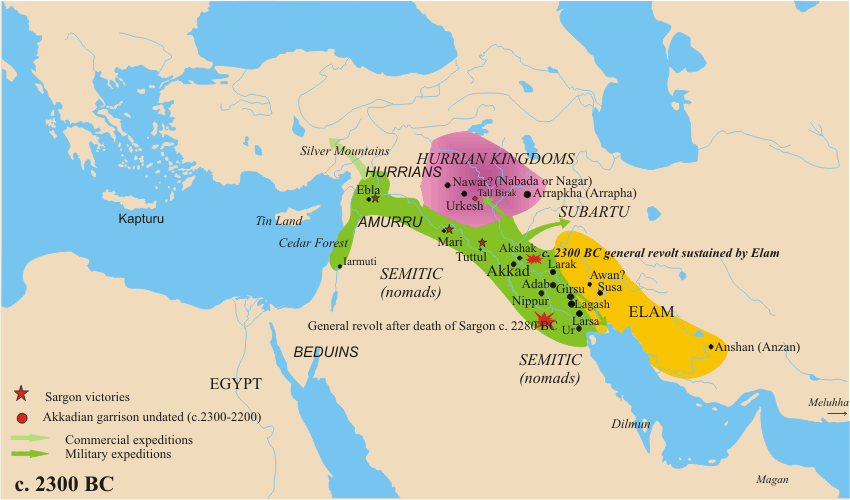
Hurrians
The Hurrians (/ˈhʊəriənz/; Hurrian: 𒄷𒌨𒊑, romanized: Ḫu-ur-ri; also called Hari, Khurrites, Hourri, Churri, Hurri) were a people who inhabited the Ancient Near East during the Bronze Age. They spoke the Hurrian language, and lived throughout northern Syria, upper Mesopotamia and southeastern Anatolia.
The Hurrians were first documented in the city of Urkesh, where they built their first kingdom. Their largest and most influential Hurrian kingdom was Mitanni. The population of the Hittite Empire in Anatolia included a large population of Hurrians, and there is significant Hurrian influence in Hittite mythology.[1] By the Early Iron Age, the Hurrians had been assimilated with other peoples. The state of Urartu later covered some of the same area.[2]
The Hurrian culture made a great impact on the religion of the Hittites. From the Hurrian cult centre at Kummanni in Kizzuwatna, Hurrian religion spread to the Hittite people.[37][38] Syncretism merged the Old Hittite and Hurrian religions. Hurrian religion spread to Syria, where Baal became the counterpart of Teshub. The Hurrian religion, in different forms, influenced the entire ancient Near East, except ancient Egypt and southern Mesopotamia.
While the Hurrian and Urartian languages are related, there is little similarity between corresponding systems of belief.[39]
The main gods in the Hurrian pantheon were:
Hurrian cylinder seals often depict mythological creatures such as winged humans or animals, dragons and other monsters. The interpretation of these depictions of gods and demons remains uncertain. They may have been both protective and evil spirits. Some are reminiscent of the Assyrian shedu.
The Hurrian gods do not appear to have had particular home temples, like in the Mesopotamian or Ancient Egyptian religion. Some important cult centres were Kummanni in Kizzuwatna and Hittite Yazilikaya. Harran was at least later a religious centre for the moon god, and Shauskha had an important temple in Nineve, when the city was under Hurrian rule. A temple of Nergal was built in Urkesh in the late third millennium BC. The town of Kahat was a religious centre in the kingdom of Mitanni.
The Hurrian myth "The Songs of Ullikummi", preserved among the Hittites, is a parallel to Hesiod's Theogony; the castration of Uranus by Cronus may be derived from the castration of Anu by Kumarbi, while Zeus's overthrow of Cronus and Cronus's regurgitation of the swallowed gods is like the Hurrian myth of Teshub and Kumarbi.[57] It has been argued that the worship of Attis drew on Hurrian myth.[58]